Table of Contents
Planning a trip to Normandy to explore the historical D-Day landing sites? With so much to see, choosing where to begin can feel overwhelming. From the iconic beaches to poignant cemeteries and insightful museums, Normandy holds a wealth of stories from that pivotal day in history. This guide highlights ten must-see D-Day sites to visit in Normandy in 2025, offering a mix of well-known landmarks and lesser-known gems. Whether you're a history buff, a student, or simply looking to pay your respects, these locations provide a powerful and moving experience. We'll journey from the imposing Longues-sur-Mer Battery, offering a glimpse into the German coastal defenses, to the solemn Normandy American Cemetery, a place of remembrance overlooking Omaha Beach. Discover the stories behind Pegasus Bridge, explore the Juno Beach Centre, and reflect at the Le Cambe German War Cemetery. Each site offers a unique perspective on the events of D-Day and the subsequent Battle of Normandy. Prepare to be transported back in time as we uncover the key places to understand and honor this crucial chapter in world history. Let's embark on this journey through the D-Day sites to visit in Normandy.
LonguessurMer Battery: A Glimpse into German Defenses
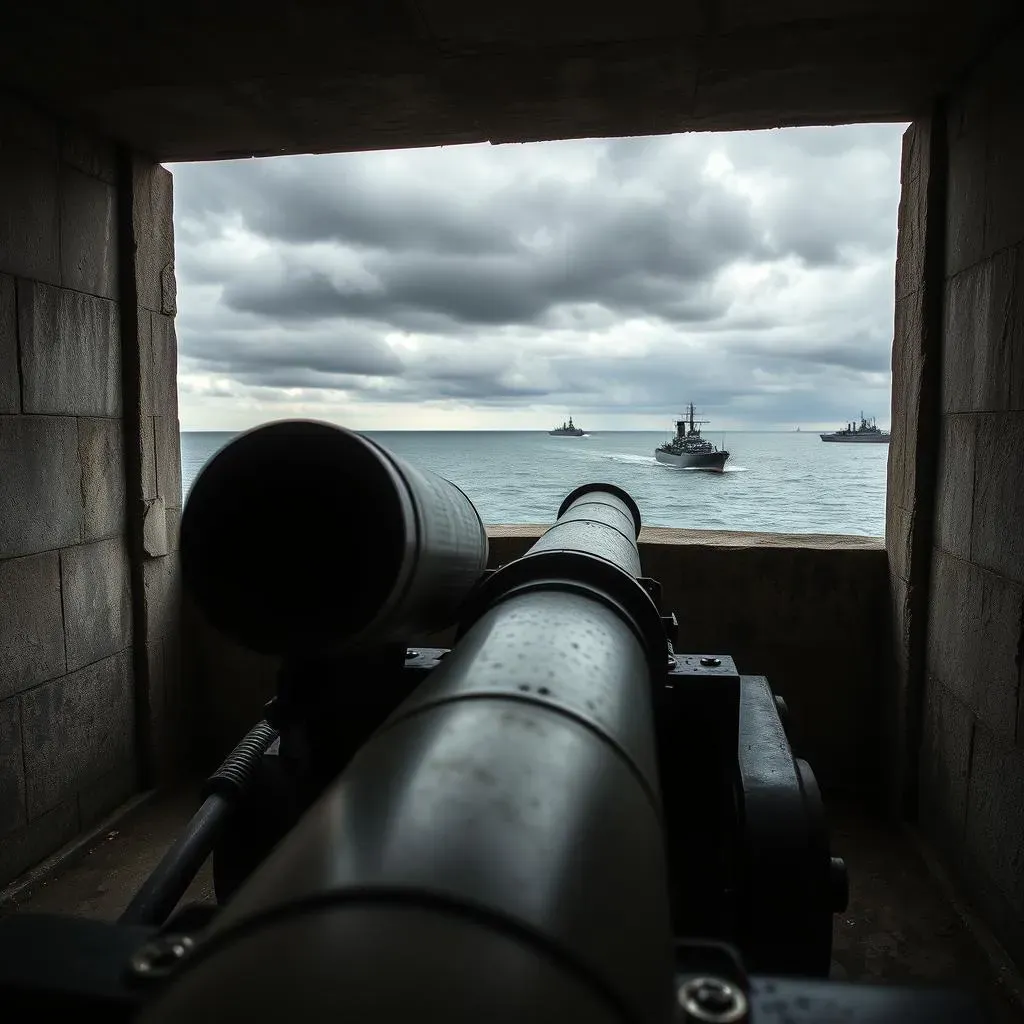
LonguessurMer Battery: A Glimpse into German Defenses
so you're diving into the Longues-sur-Mer Battery? Awesome choice! This place is seriously cool because it's one of the only German coastal defense batteries in Normandy that still has its original guns. I mean, how often do you get to see that? Perched right on the cliffs between Omaha and Gold Beaches, it gives you a real sense of the strategic importance of this location during D-Day. You can almost feel the tension in the air, imagining what it must have been like back in 1944.
When you visit, take your time to wander around the site. Four casemates originally housed the 150mm guns, and you can still see them today, along with the command post. The guns themselves are a sight to behold – massive pieces of artillery that were meant to pound the Allied ships approaching the coast. It’s a stark reminder of the firepower the Allies faced. What's particularly interesting is that the battery engaged in a duel with Allied warships on D-Day, so you're standing on a spot that saw some serious action.
Don’t forget to check out the observation bunker, too. From there, the German artillery spotters had a clear view of the sea, allowing them to direct fire with frightening accuracy. Standing in their shoes, you get a sense of the challenges the Allied forces faced as they approached the beaches. It’s a sobering experience, but a crucial one for understanding the scale of the operation. Pro tip: Bring binoculars for an even better view of the coastline!
Feature | Description |
|---|---|
Original Guns | Four 150mm naval guns still in place. |
Casemates | Concrete bunkers housing the guns. |
Observation Bunker | Command post with a clear view of the sea. |
Normandy American Cemetery: Honoring the Fallen on Omaha Beach
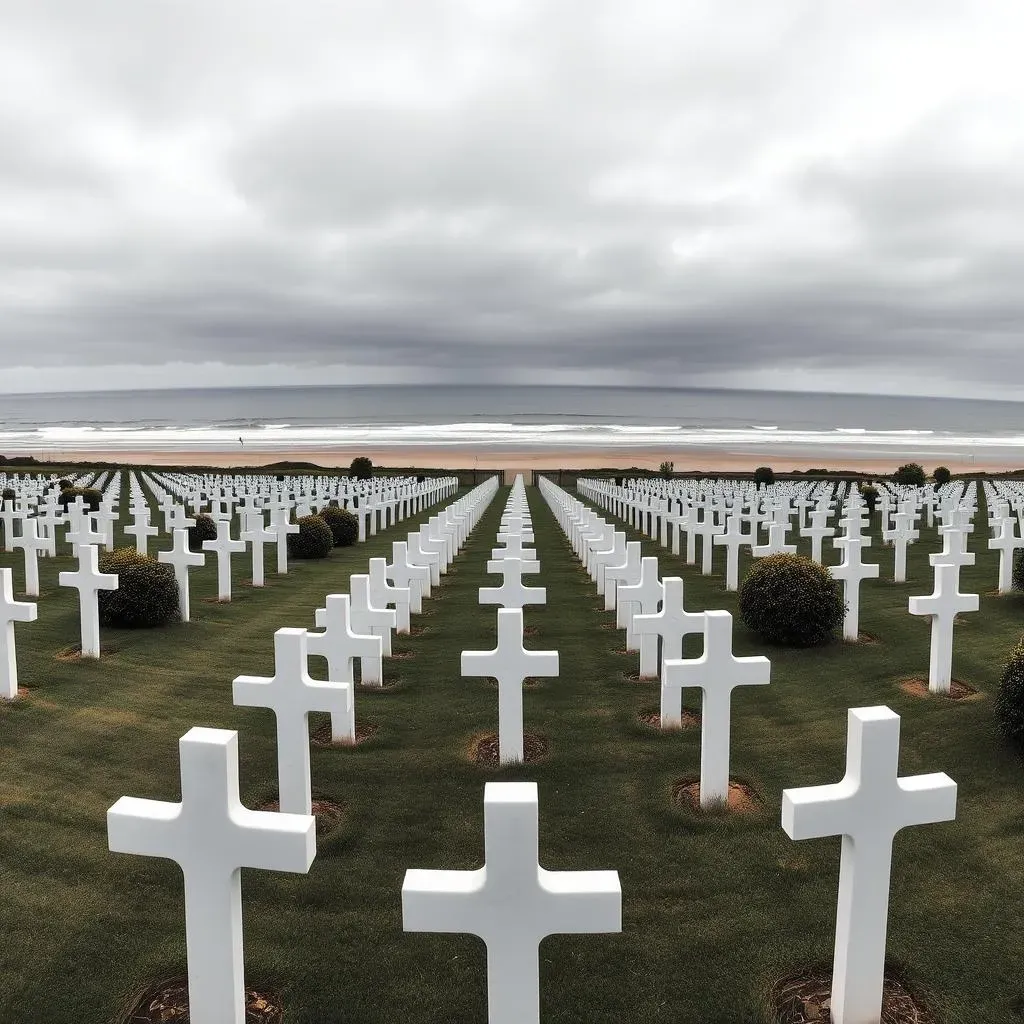
Normandy American Cemetery: Honoring the Fallen on Omaha Beach
A Place of Remembrance
so next up, you absolutely HAVE to visit the Normandy American Cemetery. It's not just a cemetery; it's a profoundly moving experience. Overlooking Omaha Beach, where some of the fiercest fighting took place, it’s the final resting place for over 9,380 American soldiers. Seriously, walking through those rows of white crosses and Stars of David is something you won't forget. It really hits home the sheer scale of the sacrifice made during D-Day. I remember the first time I went; it was a gray, overcast day, which somehow made it even more impactful. The silence is deafening, broken only by the sound of the wind and the distant waves.
The cemetery is meticulously maintained, and the grounds are stunning. As you walk towards the memorial, you'll pass reflecting pools and a beautiful chapel. Take some time to visit the Walls of the Missing, which commemorate over 1,500 soldiers whose remains were never recovered or identified. The whole place is designed to encourage reflection and remembrance. It's a place to honor the courage and dedication of these young men who fought for freedom. Trust me, you'll want to set aside a good chunk of your day for this visit. It's not something you want to rush.
Experiencing the Cemetery
Make sure you visit the visitor center before you start exploring the cemetery. They have exhibits that provide context and background on the D-Day landings and the Battle of Normandy. You can also learn about some of the individual soldiers buried there, which makes the experience even more personal. The staff are incredibly knowledgeable and helpful, so don't hesitate to ask questions. Then, walk down to the overlook point facing Omaha Beach. From there, you can see the vast expanse of the beach and imagine the scene on June 6, 1944. It's a sobering view, but an essential one for understanding the significance of this place.
Also, try to attend the daily flag-lowering ceremony if you can. It's a simple but moving tribute that takes place every afternoon. The ceremony includes a bugler playing Taps and a color guard lowering the American flag. It's a powerful way to pay your respects. Seriously, visiting the Normandy American Cemetery: Honoring the Fallen on Omaha Beach is an essential part of any trip to the D-Day sites. It's a place to remember, to reflect, and to honor the sacrifices made for freedom. You won't regret it.
Feature | Description |
|---|---|
Graves | Over 9,380 American soldiers are buried here. |
Memorial | Features a chapel, reflecting pools, and the Walls of the Missing. |
Visitor Center | Provides context and background on D-Day. |
Bayeux War Cemetery: Remembering the Commonwealth's Sacrifice
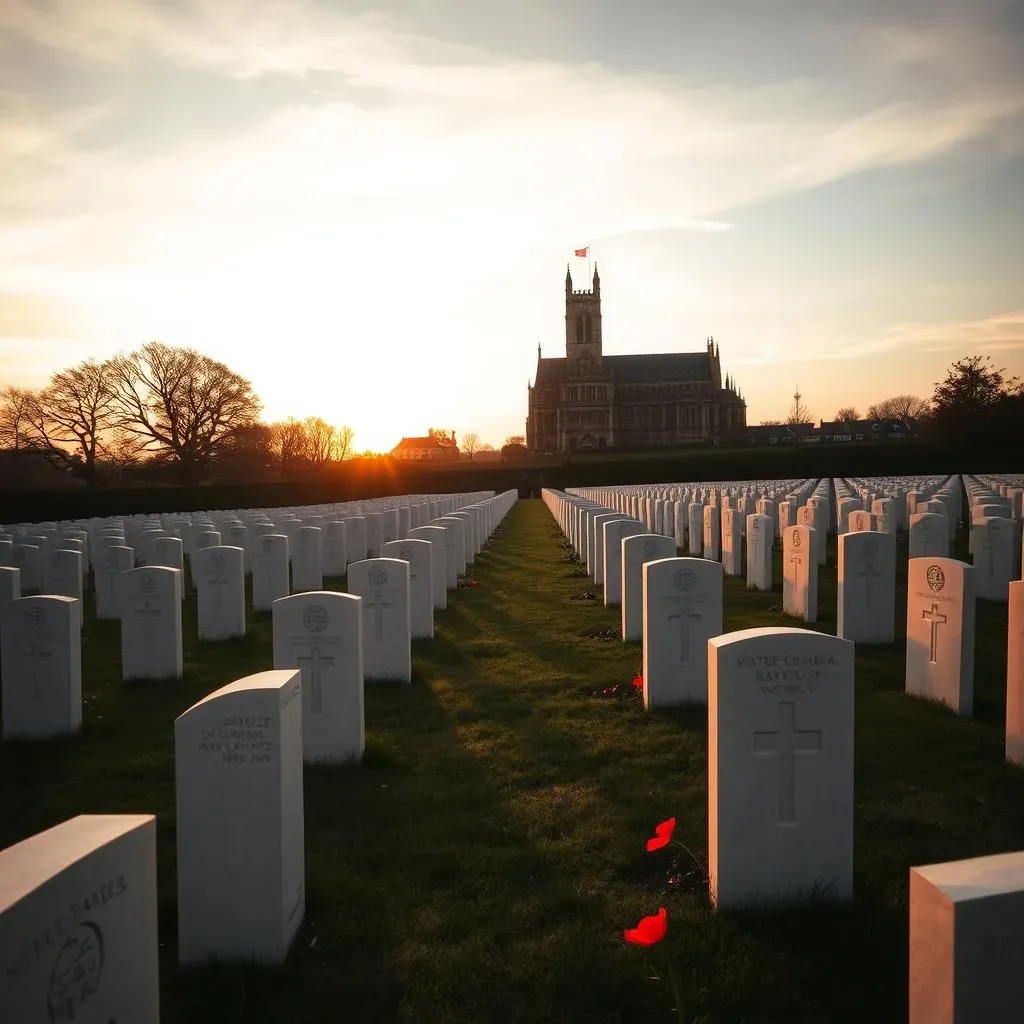
Bayeux War Cemetery: Remembering the Commonwealth's Sacrifice
so after the Normandy American Cemetery, you should definitely make your way to the Bayeux War Cemetery. It's another really important site, but it offers a different perspective. This one is the largest Commonwealth war cemetery in France, holding the graves of over 4,600 soldiers from the British Commonwealth and other nations. Walking through it, you'll notice the headstones are uniform, each bearing the regimental badge and a personal inscription chosen by the families. It's incredibly moving to read some of those inscriptions – they really bring home the individual stories behind the names. I always find it a more intimate experience than the American cemetery, if that makes sense. It's a testament to the global effort to liberate Europe.
What's also significant about Bayeux is that it was the first major town to be liberated after D-Day. Because of that, it became a crucial hub for medical facilities and supply lines. Many of those who died in the surrounding battles were brought here for burial. When you visit, take some time to walk around and read the names and inscriptions. Think about the diversity of the soldiers who fought here – British, Canadian, Australian, New Zealander, Polish, and more. They all came together for a common cause, and this cemetery is a powerful reminder of their sacrifice. It's a place for quiet reflection and remembrance.
Don't miss the Bayeux Memorial, which stands opposite the cemetery. It commemorates more than 1,800 Commonwealth soldiers who died in the Battle of Normandy and have no known grave. Their names are inscribed on panels, a solemn reminder of the many who were lost. Also, right next to the cemetery, you'll find the Bayeux Cathedral, a stunning example of Norman architecture. It's worth a visit, too, as it played a role in the town's history during the war. So, make sure you allocate enough time to fully appreciate the Bayeux War Cemetery: Remembering the Commonwealth's Sacrifice and its surrounding historical landmarks. It's a deeply enriching experience.
Feature | Description |
|---|---|
Graves | Over 4,600 Commonwealth soldiers buried here. |
Memorial | Commemorates over 1,800 missing soldiers. |
Location | Bayeux, the first major town liberated after D-Day. |
ArromancheslesBains: Witnessing the Ingenuity of the Artificial Harbor
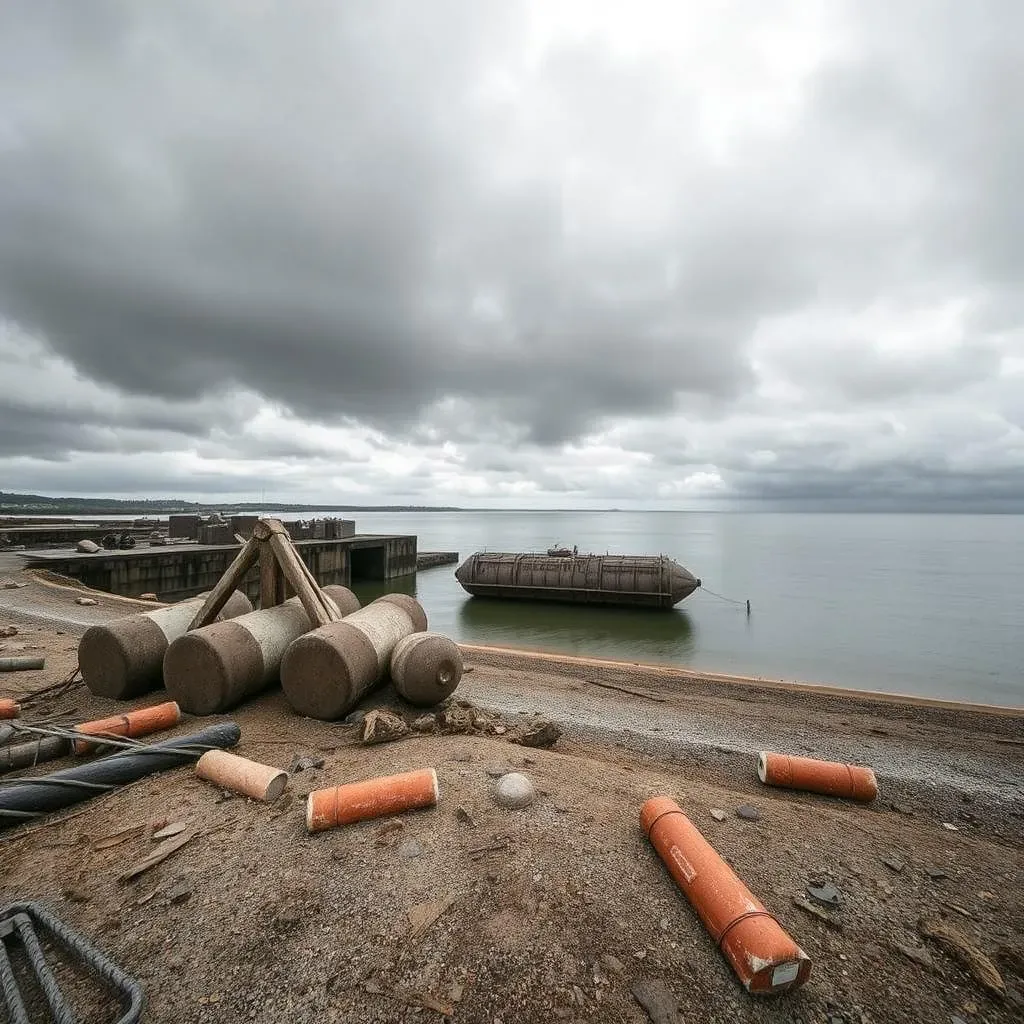
ArromancheslesBains: Witnessing the Ingenuity of the Artificial Harbor
A Marvel of Engineering
Alright, so you're heading to Arromanches-les-Bains? You're in for a treat! This place is mind-blowing because it’s where the Allies built a temporary artificial harbor, codenamed "Mulberry B," to supply their troops after D-Day. Seriously, picture this: they towed massive concrete structures across the English Channel and assembled them here to create a functional port. I mean, how insane is that? Without this harbor, the Allied advance would have been seriously hampered. It’s a testament to human ingenuity and determination. When I first saw the remains of the harbor, I was just awestruck by the scale of the operation. It's one thing to read about it, but seeing it in person really brings it to life.
The key thing to understand is that the Allies needed a way to unload supplies quickly and efficiently. The Germans had heavily fortified all the major ports along the French coast, so a direct assault was out of the question. The solution? Build their own port! The Mulberry harbor consisted of floating piers, breakwaters made of sunken ships and concrete caissons, and roadways connecting everything to the shore. It was a logistical miracle. Even though much of it is gone now, you can still see the remains of the caissons stretching out into the sea. It's a powerful reminder of the scale and complexity of the D-Day operations. You can almost hear the sounds of the trucks and cranes unloading supplies, and the soldiers marching ashore.
Exploring the Remains
When you visit Arromanches, start at the Arromanches 360 circular cinema. It shows a film using archive footage that puts the whole operation into context. It’s a great way to get your bearings and understand what you're looking at. Then, head down to the beach and take a walk along the shore. You'll see the massive concrete caissons, known as "Phoenix" caissons, scattered across the bay. These were the main components of the breakwaters, protecting the harbor from the rough seas. It's incredible to think that these structures were towed all the way from England!
Also, make sure you visit the Musée du Débarquement (D-Day Museum) in Arromanches. It has exhibits explaining the construction and operation of the Mulberry harbor, with models, maps, and photographs. You'll learn about the different components of the harbor, the challenges the engineers faced, and the impact it had on the Allied campaign. Seriously, spending an afternoon exploring Arromanches-les-Bains: Witnessing the Ingenuity of the Artificial Harbor is a must-do. It’s a chance to appreciate the incredible engineering feat that helped turn the tide of World War II. You won't be disappointed.
Feature | Description |
|---|---|
Mulberry B | The artificial harbor constructed by the Allies. |
Phoenix Caissons | Massive concrete structures used as breakwaters. |
Musée du Débarquement | Museum dedicated to the construction and operation of the harbor. |
A Lasting Legacy
Even though the Mulberry harbor was only meant to be temporary, it played a crucial role in the Allied victory. It allowed them to land troops, vehicles, and supplies much faster than they could have otherwise. It's estimated that over 2.5 million men, 500,000 vehicles, and 4 million tons of supplies were unloaded through the Mulberry harbors before the Allies captured Cherbourg and other major ports. That's an insane amount of stuff! The success of the Mulberry harbor proved that the Allies could overcome any logistical challenge, no matter how daunting.
Today, Arromanches-les-Bains is a charming seaside town with a rich history. The remains of the Mulberry harbor serve as a constant reminder of the events of D-Day. It’s a place where you can reflect on the sacrifices made and the ingenuity displayed during the war. Take a stroll along the beach, enjoy the views, and imagine what it must have been like to be there in 1944. The town itself is lovely, with plenty of cafes and restaurants where you can relax and soak up the atmosphere. So, definitely add Arromanches-les-Bains: Witnessing the Ingenuity of the Artificial Harbor to your list of D-Day sites to visit. It's a unique and unforgettable experience.
Airborne Museum, SainteMèreEglise: Reliving the Paratrooper Landings
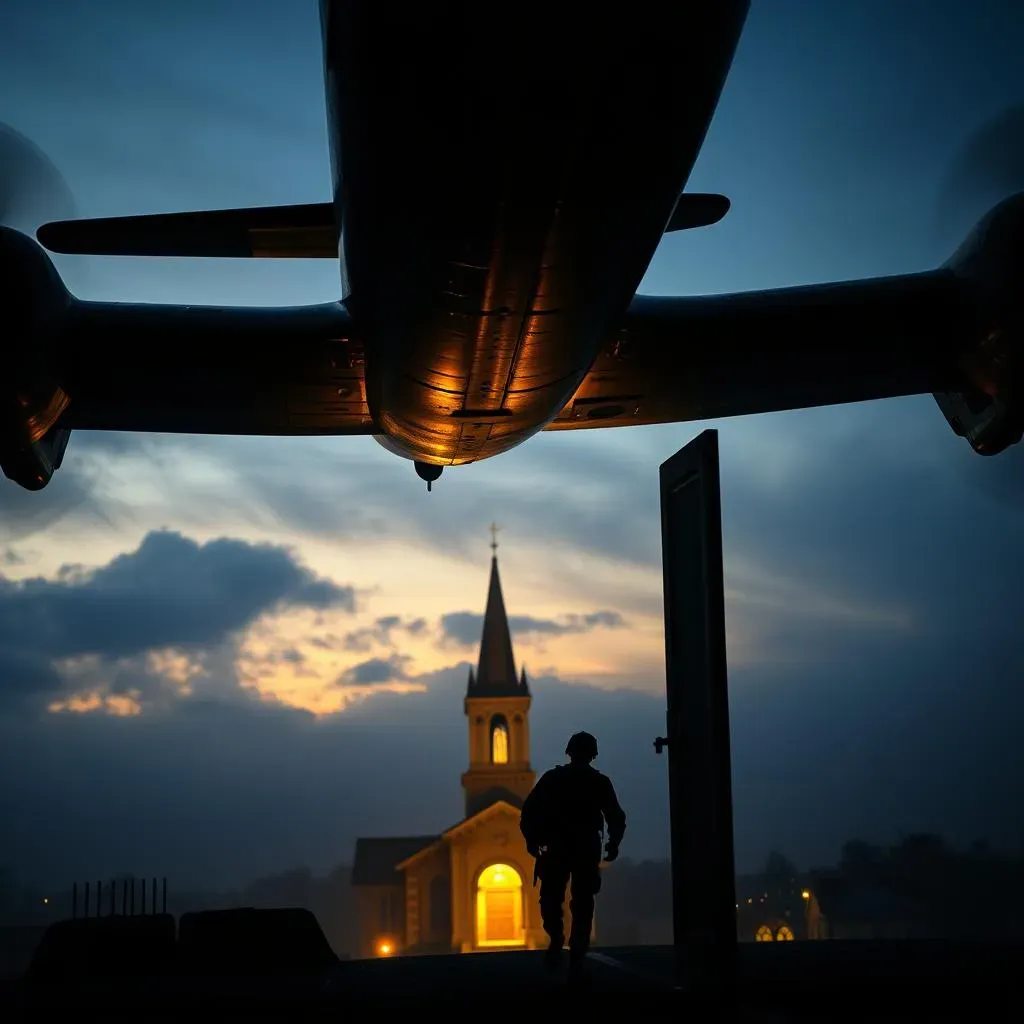
Airborne Museum, SainteMèreEglise: Reliving the Paratrooper Landings
A Town Marked by the Dawn
so picture this: it's the early hours of D-Day, and Sainte-Mère-Eglise is one of the first towns to be liberated. Now, imagine being a paratrooper dropping right into the middle of it! That's the story the Airborne Museum tells, and it does it brilliantly. This museum isn't just about exhibits; it's about immersing you in the experience of those brave paratroopers. Sainte-Mère-Eglise was a crucial strategic objective, and the fighting here was intense. The museum brings that intensity to life. You'll see artifacts, photographs, and interactive displays that really put you in their boots. It's an emotional experience, but a vital one for understanding the sacrifices made on D-Day.
The museum is divided into different buildings, each focusing on a specific aspect of the airborne landings. One of the highlights is a C-47 Skytrain aircraft that you can actually walk through. It's set up to simulate a paratroop jump, complete with sound and light effects. Seriously, it's like stepping back in time! You'll also see exhibits on the planning and execution of the airborne operations, the equipment used by the paratroopers, and the stories of individual soldiers. The museum does an excellent job of balancing the big picture with the personal stories, making it both informative and deeply moving. Trust me, you'll leave with a newfound appreciation for the courage and determination of these men.
Experiencing the Landings
When you visit the Airborne Museum, Sainte-Mère-Eglise: Reliving the Paratrooper Landings, make sure you take your time to explore each building. The exhibits are well-curated, and there's a lot to see. Start with the "Operation Overlord" building, which provides an overview of the D-Day landings and the role of the airborne divisions. Then, move on to the "C-47 Skytrain" exhibit, which is the most immersive part of the museum. You'll feel like you're actually on board the aircraft, preparing to jump into enemy territory.
Also, don't miss the "Dead Man's Corner" exhibit, which tells the story of a crucial crossroads near Sainte-Mère-Eglise that was heavily contested by the Germans. The fighting here was brutal, and the exhibit does a great job of conveying the intensity of the battle. Finally, be sure to check out the museum shop, where you can find books, souvenirs, and other items related to D-Day and the airborne operations. Spending a few hours at the Airborne Museum is an essential part of any trip to the D-Day sites. It's a chance to honor the memory of those who fought and died for freedom. You won't regret it.
Feature | Description |
|---|---|
C-47 Skytrain | Walk-through aircraft simulating a paratroop jump. |
Operation Overlord Building | Overview of the D-Day landings. |
Dead Man's Corner | Exhibit on a crucial battle site near Sainte-Mère-Eglise. |
WN60 (Widerstandsneste 60): Exploring a Preserved German Strongpoint
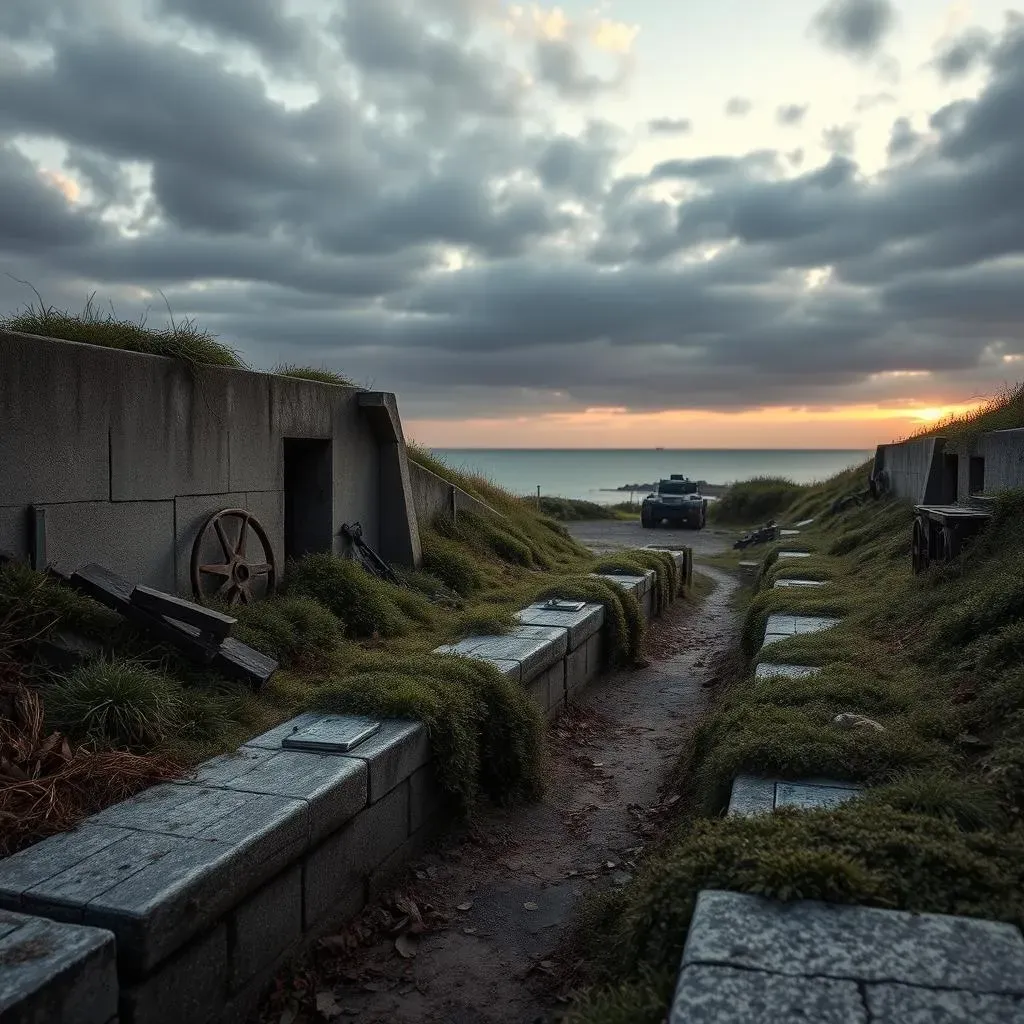
WN60 (Widerstandsneste 60): Exploring a Preserved German Strongpoint
A Step Back in Time
Alright, so WN60, or Widerstandsneste 60, is next on your list? This is a spot that history buffs absolutely geek out over! Seriously, it's one of the best-preserved German strongpoints along the Normandy coast. Unlike some of the bigger, more well-known sites, WN60 gives you a really intimate look at what these defensive positions were like. It's not just a bunch of concrete bunkers; it's a whole network of trenches, gun emplacements, and observation posts. Walking around, you can almost feel the presence of the German soldiers who manned these defenses, waiting for the Allied invasion. It's a much more raw and visceral experience compared to the larger museums.
What makes WN60 so special is its authenticity. It hasn't been overly restored or sanitized. You're seeing it pretty much as it was left after the battle. The trenches are still there, the bunkers are still standing, and you can even see some of the original equipment and artifacts. It's like stepping back in time. You can explore the different bunkers, imagine the soldiers peering out through the gun slits, and get a sense of the claustrophobic conditions they endured. It's a sobering reminder of the realities of war. Trust me, if you want to understand what it was like to be on the front lines of the German defenses, WN60 is a must-see.
What to Expect During Your Visit
When you visit WN60 (Widerstandsneste 60): Exploring a Preserved German Strongpoint, wear comfortable shoes, because you'll be doing a lot of walking. The site is relatively small, but there are plenty of trenches and bunkers to explore. Also, be prepared for uneven ground and some tight spaces. It's not exactly stroller-friendly! Take your time to wander around and soak up the atmosphere. Read the information panels that are scattered throughout the site; they provide valuable context and background information.
Also, bring a flashlight. Some of the bunkers are quite dark, and a flashlight will help you see the details inside. And don't forget your camera! WN60 is a photographer's dream, with its weathered concrete structures, overgrown trenches, and stunning views of the coastline. Seriously, spending a few hours exploring WN60 is a fascinating and rewarding experience. It's a chance to connect with history on a personal level and gain a deeper understanding of the challenges faced by both sides during the D-Day landings. You won't be disappointed.
Feature | Description |
|---|---|
Preservation | One of the best-preserved German strongpoints. |
Authenticity | Offers a raw and visceral experience. |
Exploration | Trenches, bunkers, and original equipment to explore. |
Pegasus Bridge and Musée Memorial Pegasus: The Crucial First Victory
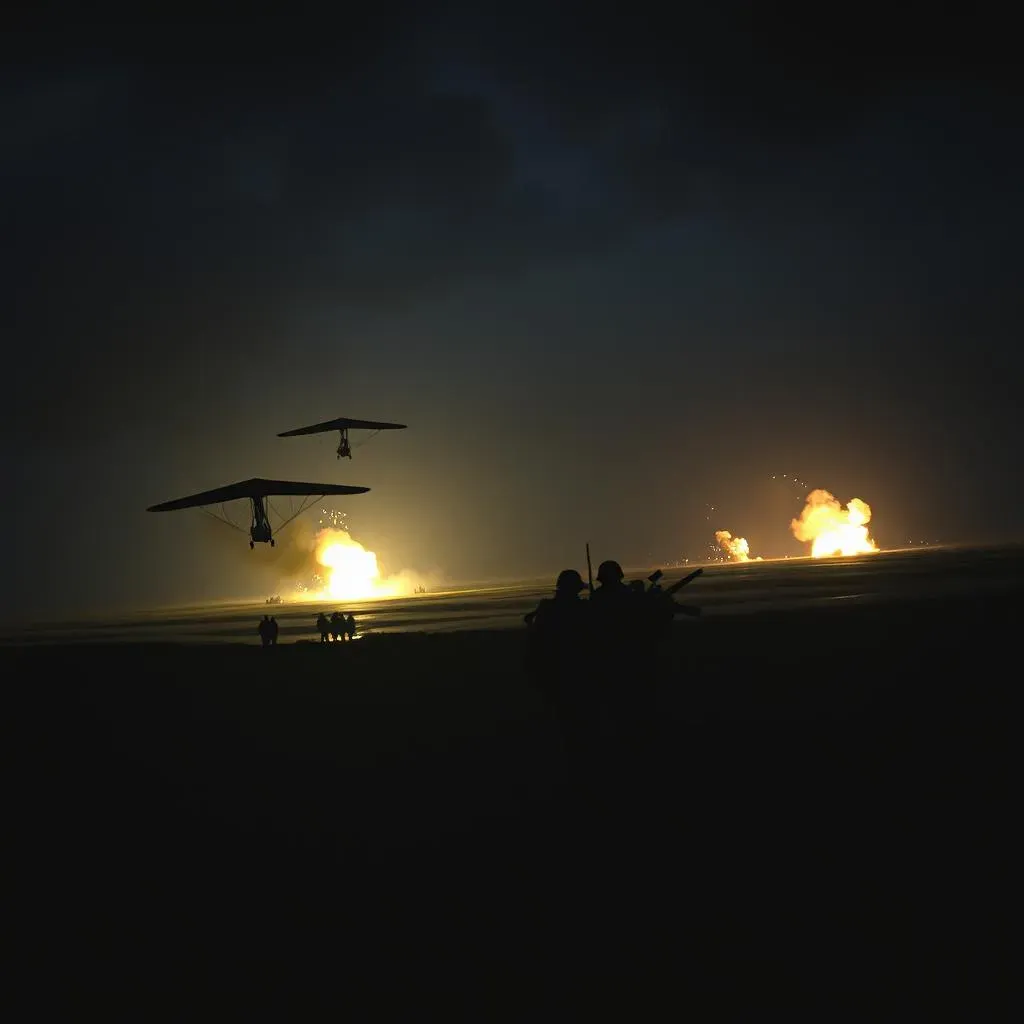
Pegasus Bridge and Musée Memorial Pegasus: The Crucial First Victory
Seizing the Bridge: A Daring Operation
Alright, so next up is Pegasus Bridge and the Musée Memorial Pegasus! This is a seriously iconic spot, because it was one of the very first objectives taken by the Allies on D-Day. Picture this: a small force of British glider troops, part of the 6th Airborne Division, silently swooping down in the dead of night to capture a vital bridge over the Caen Canal. The element of surprise was key, and they pulled it off with incredible precision. Seriously, it's like something out of a movie! This bridge was crucial for preventing German armor from reinforcing the beaches, so its capture was a major victory. It’s a story of daring, skill, and sheer guts.
The operation was led by Major John Howard, and his men landed just yards from the bridge. They quickly overwhelmed the German defenders, securing the bridge in a matter of minutes. The whole thing was over before the Germans even knew what was happening! It's an amazing feat of military planning and execution. The bridge was then held against repeated German counterattacks until relieved by other Allied forces later in the day. The original Pegasus Bridge is now on display at the Musée Memorial Pegasus, and seeing it up close really brings the story to life. It's a tangible reminder of the courage and sacrifice of those who fought here.
Exploring the Musée Memorial Pegasus
The Musée Memorial Pegasus is a must-visit if you're interested in learning more about the operation. The museum tells the story of the 6th Airborne Division and their role in the D-Day landings. You'll see exhibits on the planning and execution of the Pegasus Bridge operation, the equipment used by the soldiers, and the stories of individual men who fought there. There are also displays on the other operations carried out by the 6th Airborne Division, including the capture of Merville Battery.
One of the highlights of the museum is the original Pegasus Bridge itself. It's been replaced by a modern bridge, but the original is preserved here as a monument to the bravery of the soldiers who captured it. You can walk across the bridge and imagine what it must have been like to be there on that fateful night. Also, there's a replica of a Horsa glider, the type of aircraft used to transport the troops to the bridge. You can go inside the glider and get a sense of the cramped conditions the soldiers endured during the flight. The visit to Pegasus Bridge and Musée Memorial Pegasus: The Crucial First Victory offers a unique insight into the airborne assault that helped pave the way for the D-Day landings.
Feature | Description |
|---|---|
Original Pegasus Bridge | On display at the Musée Memorial Pegasus. |
Musée Memorial Pegasus | Tells the story of the 6th Airborne Division. |
Horsa Glider Replica | Allows visitors to experience the conditions of the airborne assault. |
A Symbol of Allied Resolve
Pegasus Bridge is more than just a historical site; it's a symbol of Allied resolve and the determination to liberate Europe from Nazi occupation. The success of the operation boosted morale and demonstrated that the Allies could strike deep into enemy territory. It also set the stage for the larger D-Day landings that followed. The capture of Pegasus Bridge was a crucial first step in the liberation of France, and it remains an inspiration to this day.
Today, Pegasus Bridge is a place of remembrance and reflection. Visitors come from all over the world to pay their respects to the soldiers who fought and died here. The Musée Memorial Pegasus is a fitting tribute to their bravery and sacrifice. If you're planning a trip to the D-Day sites, make sure you include Pegasus Bridge and Musée Memorial Pegasus: The Crucial First Victory on your itinerary. It's a place where you can connect with history on a personal level and gain a deeper understanding of the events that shaped the modern world.
Normandy Victory Museum, Carentan: Experiencing Life After DDay
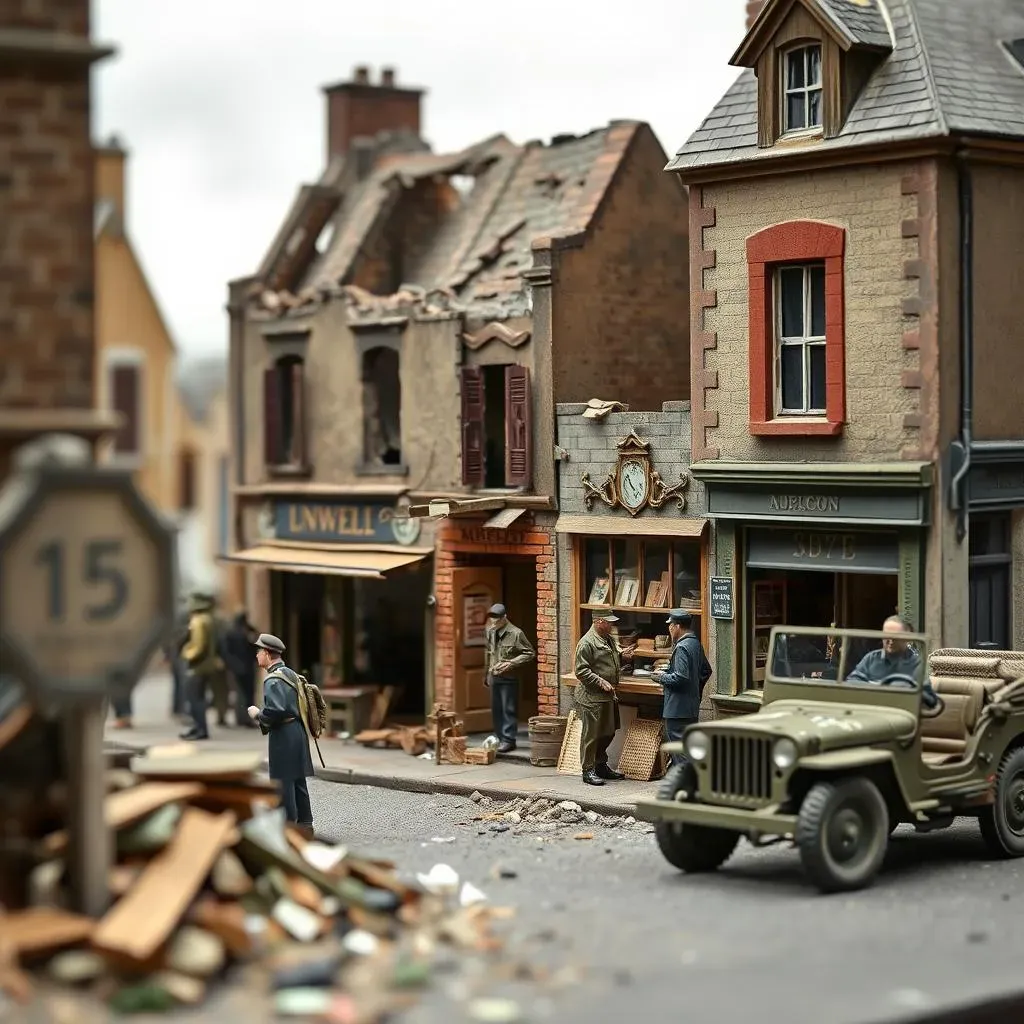
Normandy Victory Museum, Carentan: Experiencing Life After DDay
Beyond the Beaches: A Different Perspective
So, you've seen the beaches, the cemeteries, and the battlefields. Now it's time to head to the Normandy Victory Museum, Carentan, for a completely different take on the D-Day story. This museum isn't just about the military operations; it's about what happened *after* June 6, 1944. It's about the liberation of Normandy, the rebuilding of the region, and the lives of the civilians who had to pick up the pieces after the fighting was over. I think this museum is really important because it reminds us that war doesn't just end when the last shot is fired. It has long-lasting consequences for the people who live there. It's a human story, and it's one that often gets overlooked.
Carentan itself was a key strategic objective during the Battle of Normandy. It was a crossroads town, and its capture was essential for linking up the American forces that had landed on Utah and Omaha Beaches. The fighting in Carentan was fierce, and the town was heavily damaged. The Normandy Victory Museum tells the story of that battle, but it also goes beyond it, exploring the challenges faced by the town's residents in the aftermath of the fighting. You'll see exhibits on the rebuilding of Carentan, the return of refugees, and the efforts to restore normal life. It's a story of resilience, determination, and the human spirit.
Immersive Exhibits and Personal Stories
What really sets the Normandy Victory Museum, Carentan: Experiencing Life After D-Day apart is its immersive exhibits. They've created realistic recreations of scenes from daily life in Normandy after the liberation. You'll walk through a bombed-out street, see a typical Norman farmhouse, and visit a schoolroom. These exhibits are incredibly detailed, and they really transport you back in time. You'll also see artifacts from the period, including clothing, household items, and personal letters. It's like stepping into a time capsule. The exhibits tell the stories of individual people who lived through these events, giving you a personal connection to the history.
Another highlight of the museum is its collection of vehicles and equipment. You'll see jeeps, trucks, and tanks that were used during the Battle of Normandy. There are also exhibits on the medical services that were provided to the wounded, both soldiers and civilians. The museum does a great job of showing the different aspects of life in Normandy after D-Day, from the military operations to the civilian experience. Seriously, spending a few hours at the Normandy Victory Museum is a must-do if you want to understand the full impact of D-Day and the Battle of Normandy. It's a powerful and moving experience that you won't soon forget.
Planning Your Visit
When you visit the Normandy Victory Museum, Carentan: Experiencing Life After D-Day, allow at least two to three hours to see everything. There's a lot to take in, and you'll want to take your time to explore the exhibits and read the information panels. The museum is located in the center of Carentan, so it's easy to find. There's also a parking lot nearby.
Before you go, check the museum's website for information on special events and exhibitions. They often have temporary displays that focus on specific aspects of the Battle of Normandy or the liberation of the region. Also, consider taking a guided tour. The guides are very knowledgeable, and they can provide additional insights and information. Seriously, the Normandy Victory Museum is a hidden gem that deserves to be on every D-Day traveler's itinerary. It's a chance to learn about a side of the story that often gets overlooked, and it's a reminder of the importance of peace and reconciliation.
Feature | Description |
|---|---|
Focus | Life in Normandy after D-Day. |
Exhibits | Immersive recreations of daily life. |
Location | Carentan, a key strategic objective. |
Juno Beach Centre: Discovering the Canadian Contribution to DDay
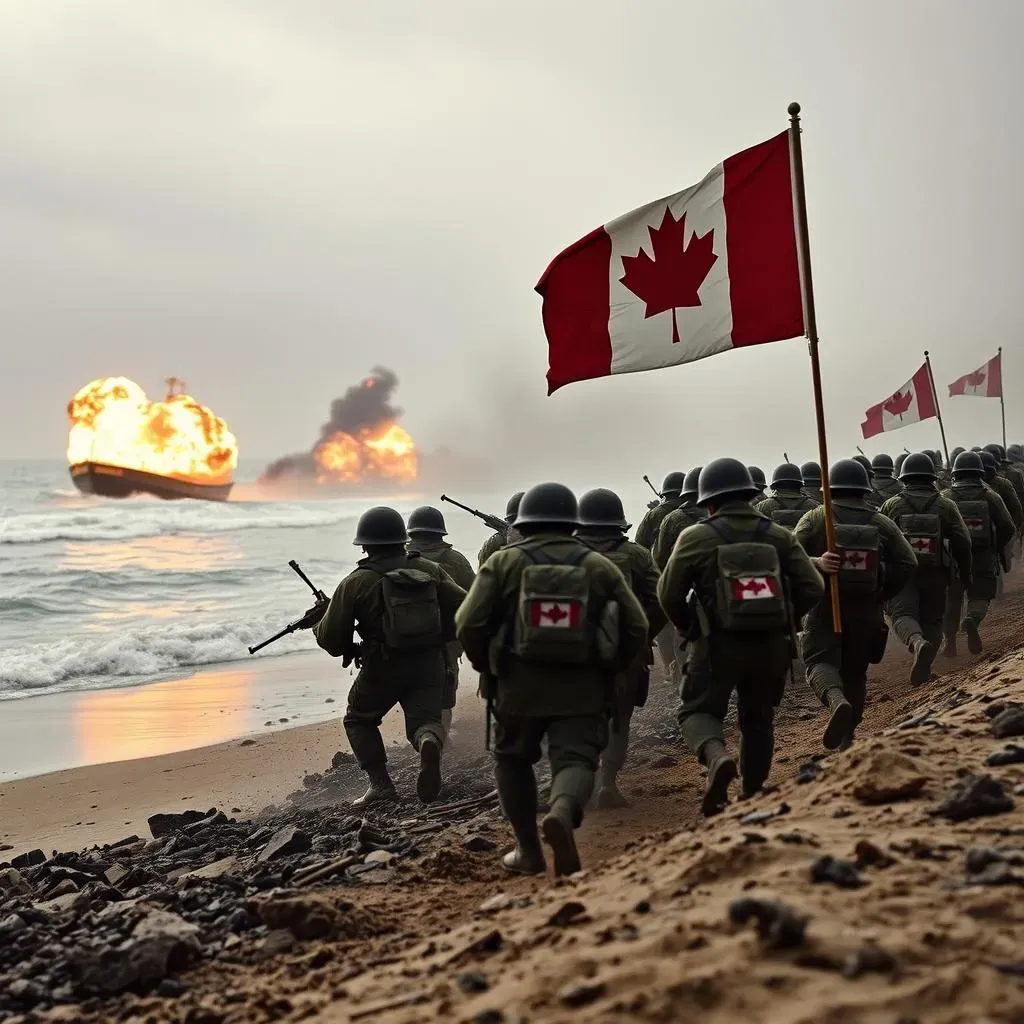
Juno Beach Centre: Discovering the Canadian Contribution to DDay
Alright, so you're heading to the Juno Beach Centre? That's awesome! It's so important to remember that D-Day wasn't just an American show; the Canadians played a huge role, and Juno Beach was their landing zone. Seriously, this museum is dedicated to telling the Canadian story, and it does a fantastic job. It's not just about the military stuff, although there's plenty of that. It's also about the Canadian identity, the sacrifices made by Canadian soldiers, and the impact of the war on Canadian society. I think it's really crucial to understand the global effort that went into liberating Europe, and the Juno Beach Centre is a key piece of that puzzle.
When you visit, you'll learn about the challenges the Canadian troops faced on Juno Beach. The Germans had heavily fortified the area, and the Canadians encountered fierce resistance. Despite that, they managed to push inland further than any other Allied force on D-Day. That's something to be proud of! The museum tells the stories of individual soldiers, showing you what it was like to be there on that day. You'll see artifacts, photographs, and interactive exhibits that really bring the history to life. It's an emotional experience, but it's also an inspiring one. You'll leave with a newfound appreciation for the courage and determination of the Canadian soldiers who fought for freedom. The Juno Beach Centre: Discovering the Canadian Contribution to D-Day is a must-visit for anyone interested in learning more about the D-Day landings.
Feature | Description |
|---|---|
Focus | Canadian contribution to D-Day. |
Location | Juno Beach, the Canadian landing zone. |
Perspective | Military and societal impact on Canada. |
Le Cambe German War Cemetery: Reflecting on the Other Side of the Conflict
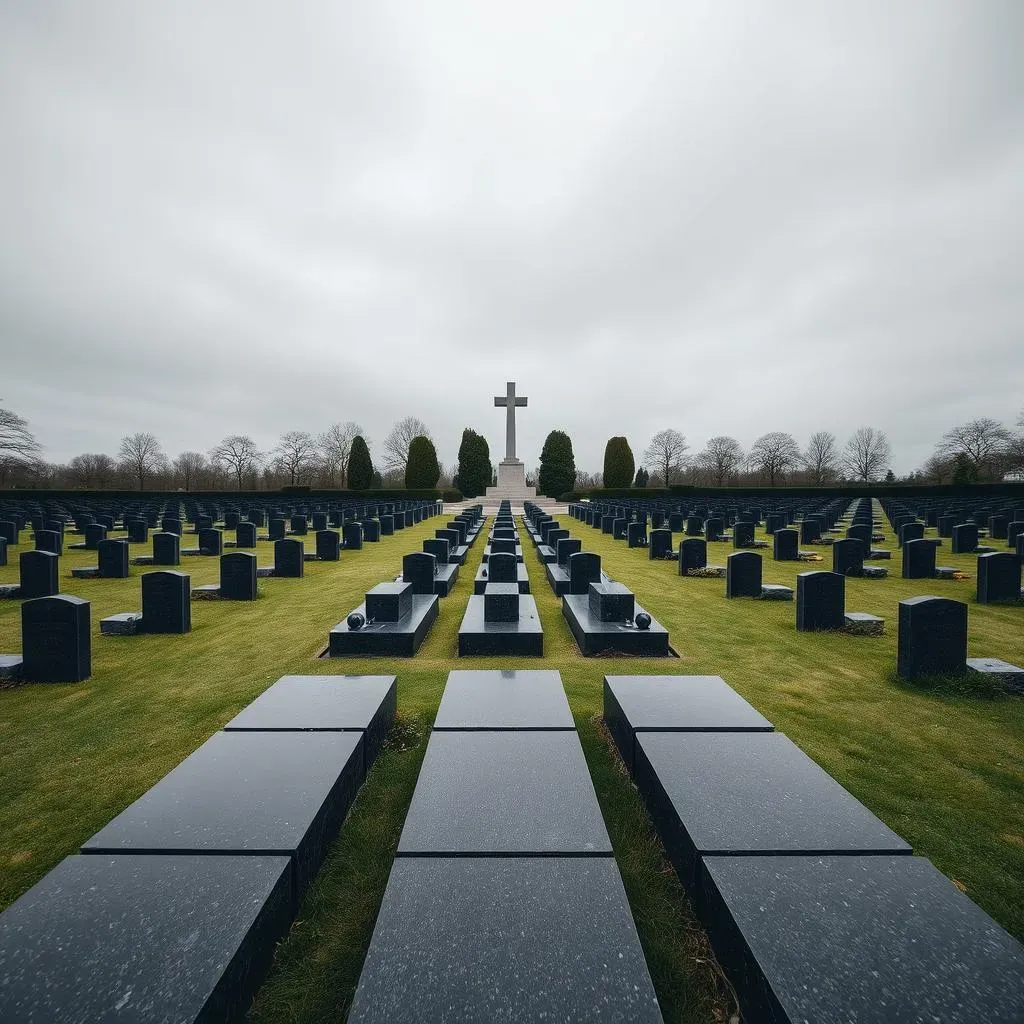
Le Cambe German War Cemetery: Reflecting on the Other Side of the Conflict
A Place of Somber Reflection
Alright, so after visiting all the Allied cemeteries, it's essential to take a moment to reflect at Le Cambe German War Cemetery. I know it might feel strange to visit a German cemetery after honoring the Allied soldiers, but it's a crucial part of understanding the full scope of the conflict. This isn't about glorifying war or taking sides; it's about acknowledging the human cost on both sides. Le Cambe is the final resting place for over 21,000 German soldiers, and walking through it is a profoundly moving experience. It's a reminder that war is a tragedy for everyone involved, regardless of which uniform they wore. It's a place for somber reflection and a chance to contemplate the futility of war.
What strikes you immediately about Le Cambe is its stark contrast to the American and Commonwealth cemeteries. Instead of rows of white crosses, you'll find dark granite markers lying flat on the ground. Each marker bears the names of two soldiers, and the overall effect is one of quiet dignity. The cemetery is meticulously maintained, and the grounds are peaceful and serene. It's a place where you can reflect on the individual lives that were lost and the impact of the war on families and communities. It's a reminder that every soldier, regardless of their nationality, was someone's son, brother, father, or husband. Le Cambe German War Cemetery: Reflecting on the Other Side of the Conflict offers a unique perspective on the human cost of war, and it's an essential part of any trip to the D-Day sites.
Experiencing Le Cambe
When you visit Le Cambe, take your time to walk around and read the names on the markers. Think about the lives of the soldiers who are buried there. Many of them were very young, and they were fighting for a cause they believed in, however misguided it may have been. It's important to remember that they were human beings, just like the Allied soldiers who fought against them. Don't miss the central monument, which is a large stone cross. It's a place where you can pause and reflect on the meaning of war and the importance of peace.
Also, be sure to visit the visitor center, where you can learn more about the history of the cemetery and the stories of some of the soldiers who are buried there. The staff are very knowledgeable and helpful, and they can provide additional insights and information. Le Cambe German War Cemetery: Reflecting on the Other Side of the Conflict is a place where you can connect with history on a personal level and gain a deeper understanding of the complexities of war. It's a somber but essential experience, and it's one that will stay with you long after you leave.
Feature | Description |
|---|---|
Graves | Over 21,000 German soldiers buried here. |
Markers | Dark granite markers lying flat on the ground. |
Monument | A large stone cross. |
Reflecting on the Legacy: Your Normandy D-Day Journey
Exploring the D-Day sites in Normandy is more than just a history lesson; it's a deeply moving experience. From the beaches where Allied forces landed under heavy fire to the cemeteries where so many made the ultimate sacrifice, each location tells a powerful story. Whether you focus on the grand scale of Omaha Beach and the American Cemetery, or the more intimate perspectives offered at sites like Pegasus Bridge and the Juno Beach Centre, your journey through these historical landmarks will leave a lasting impression. As you plan your visit to these significant D-Day sites in Normandy, remember the courage, sacrifice, and the enduring quest for peace that these places represent. May your exploration be both educational and profoundly meaningful.
![Top 10 Must-See D-Day Sites to Visit in Normandy [2025]](https://daytripsguide.org/api/media/file/d-day-sites-to-visit-in-normandy-1.webp)